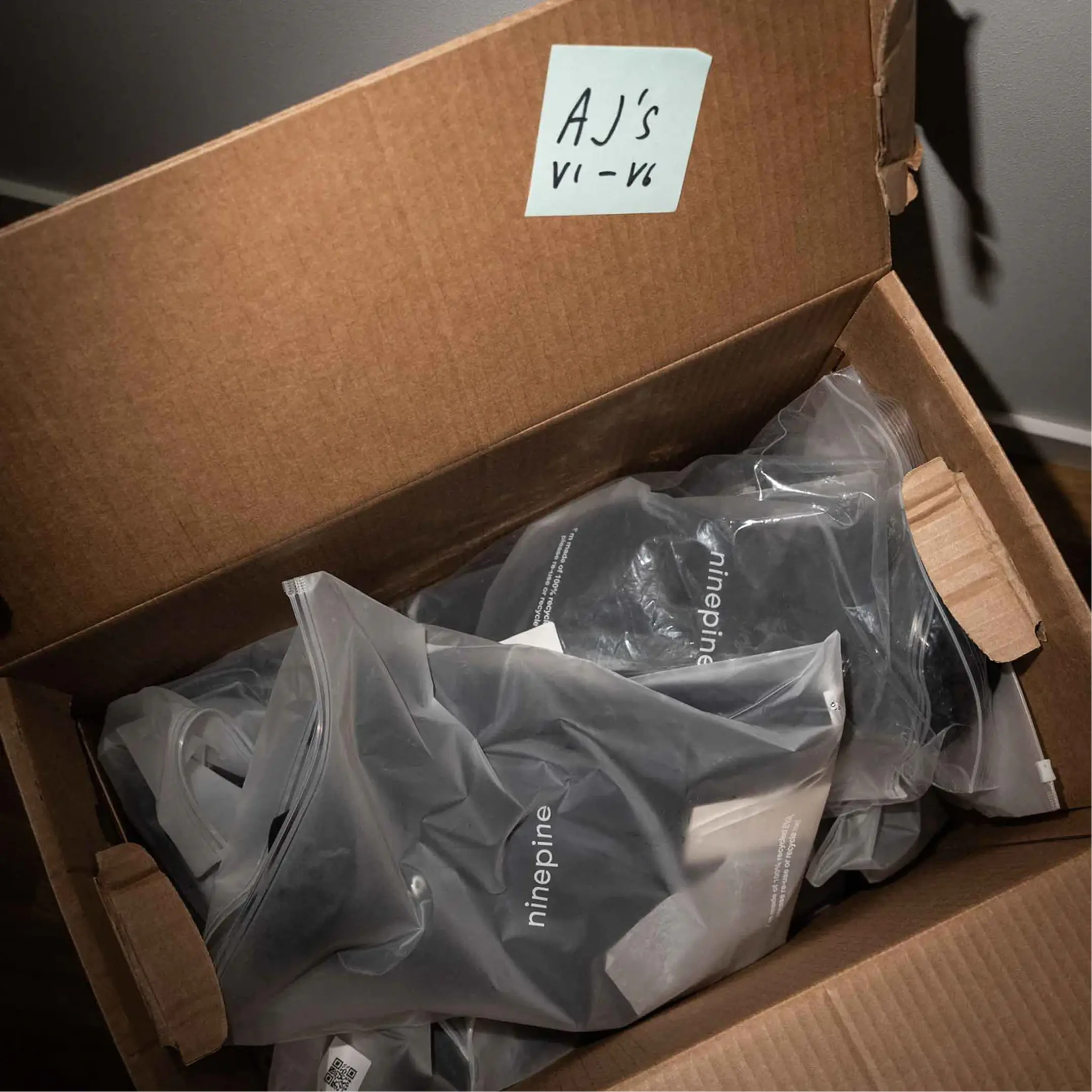Peak season puts your delivery operations under a microscope and reveals cracks in your systems when order volume goes up. Following Black Friday and Cyber Monday (BFCM) 2023, late deliveries jumped 70% compared to regular weeks.
During BFCM 2024, the average delivery promise gradually increased from Black Monday through Black Friday, ranging from 3.3 to 5.7 days across checkout orders, with out-of-home (OOH) delivery methods promising the shortest timeframes.
The consequences of failing to meet delivery expectations hit hard. When packages arrive late, one in three consumers blame the brand, not the carrier. These disappointed customers immediately switch to competitors, making peak season delivery performance a direct driver of customer lifetime value (CLTV) and retention.
Whether this year's delivery promises can handle the sales peak remains to be seen. It's a tight timeline but your team can still implement strategic changes that ease year-end delivery strain and build the foundation for long-term competitive advantage.
What is a delivery promise in e-commerce?
A delivery promise is your commitment to deliver a product within a specified timeframe, with certain conditions and service levels. It's no longer enough to email customers an estimated shipping date after processing their order. Today's consumers make purchase decisions based on knowing accurate delivery estimates before checkout.
In a delivery-driven shopping journey, consumers want to know who offers the most convenient, fastest, and most cost-effective delivery option upfront. Your delivery promise should ideally appear across multiple touchpoints — search filters, product pages, mini cart, and checkout. Lack of flexibility, unexpected costs, and the absence of reliable delivery promises are the top drivers of cart abandonment.
Why e-commerce delivery promises matter
Consumer expectations intensify
Peak season brings heightened expectations during the period when delays are most likely to occur. Holiday campaigns centered around Black Friday, Cyber Monday, and Christmas offer revenue potential but also turn up the heat on maintaining delivery accuracy that consumers have learned to expect as standard.
Competitive differentiation
As online retail focuses primarily on product sales rather than delivery experience, your ability to make and keep delivery promises becomes a key differentiator. It's the competitive edge that attracts and retains customers in a fiercely competitive landscape.
Brand reputation and loyalty
Consumers keep score of delivery failures. A consistent track record of reliable delivery promises builds brand reputation, while broken promises lead to negative reviews and customer churn. Meeting delivery commitments drives satisfaction, repeat purchases, and brand advocacy. 85% of online shoppers say that a poor delivery experience would prevent them from ordering from that online retailer again.
Revenue implications
An accurate delivery promise isn't just about customer satisfaction — it creates merchandising opportunities. Shipping delays can cause customers to abandon their online shopping carts, impacting retailer revenue. Precise delivery promises help you boost conversion rates, increase average order value, and turn delivery into a revenue driver in addition to your product catalog and upsell.
Average delivery promise during BFCM 2024
The average delivery promise, meaning the timeframe retailers commit to for delivering a product to the customer, gradually crept up to almost six days — from 3.3 days on Black Monday to 5.7 days over the Black Friday weekend. As expected, in-store pickups and parcel lockers tend to be the fastest methods.
Home and mailbox delivery ranged from 3.5 to 6 days, while parcel lockers promised 3 to 5.2 days. Service points and press agents fell between 3.2 and 5.8 days, with in-store pickup offering the shortest timeframes at 2.5 to 5.6 days.
What affects delivery promises during peak season
Supply chain complexity
Peak season magnifies existing supply chain challenges. Delivery orchestration depends on customer location, product shipping parameters, inventory locations, fulfillment center hours, carrier cut-offs, and last-mile capacity — all under extreme pressure when order volumes spike.
Lack of clarity and standards
Vague delivery promises like 'ships within 2-3 days' don't help customers who care about specific delivery dates and times. Fifty percent of consumers think delivery timelines start at checkout, while the other half believes they start when orders ship. This misalignment creates expectations you can't control.
Last-mile capacity constraints
The final leg faces the biggest challenges during peak season. Carrier performance varies by region and demand period. Without real-time visibility into carrier capacity and performance, you risk making promises your partners can't keep.
How do successful retailers navigate BFCM
We asked Johannes Kayser, COO at Ninepine — a Stockholm-based brand with international shipping that creates versatile, thoughtfully designed pieces for women's everyday life — for his team’s peak season approach.
"For us, peak season isn't about doing anything radical. It's about sticking to the basics like solid planning, clear communication, and close coordination with our carriers and warehouse. We make small adjustments to delivery estimates at checkout when needed, but overall it's business as usual thanks to strong partnerships and a reliable setup."

Quick changes to your BFCM delivery promise
Peak season success relies on fundamentals, as Ninepine’s philosophy demonstrates. You don't need complex integrations to start protecting your peak season performance and customer loyalty. These two strategic changes buffer against carrier delays while building customer trust.
Widen your delivery windows
Extend your typical delivery promise by an extra day during peak periods. Since 65% of delays happen in transit, this protects against carrier congestion without breaking customer trust. It's better to underpromise and overdeliver than disappoint customers with missed deadlines.
Add a free white-label option
Offer a fallback delivery option with a wider window that books any currently available carrier at better rates. Keep paid options for express or time-slot deliveries. This gives you flexibility to fulfill orders even when premium carriers hit capacity.
Strategic integrations for long-term resilience
For sustained competitive advantage beyond this peak season, consider platform-integrated solutions that deliver significant operational benefits.
Smart delivery logic at checkout
Implement software that suggests flexible delivery options and precise delivery times for each purchase, location, and preference in real time. Display options ordered by price, delivery method, sustainability, and carrier reputation. Show these suggestions before checkout — on product pages (PDP) and in the mini cart — so customers can make informed decisions early in their journey.
Display dynamic delivery cut-off dates
Instead of generic website banners about holiday delivery deadlines, display estimated delivery dates that give customers precise information about when orders will arrive. Add checkout notifications about potential delays due to higher order volumes to set realistic expectations.
Adjust promises dynamically
Monitor your fulfillment performance in real time and adjust delivery promises at checkout accordingly. If your warehouse processing time increases from same-day to next-day during peak volume, reflect that immediately in customer-facing delivery estimates.
Multi-carrier delivery strategy
Integrate with multiple carriers in each market to give customers delivery personalization. Multi-carrier relationships let you compare rates and performance levels, offer the most popular delivery methods by market, and leverage competitive leverage during rate negotiations. When one carrier hits capacity during peak season, you can seamlessly shift volume to alternatives.
Add OOH and named-day delivery methods
Data shows OOH delivery methods promise the shortest timeframes during peak season. Promote parcel lockers and pickup points as reliable alternatives when home delivery capacity becomes constrained. Additionally, customers should be allowed to choose specific days and time slots to boost delivery experience personalization.
Real-time carrier management systems
Deploy systems that instantly remove lagging carriers from checkout and dynamically adjust delivery estimates based on warehouse congestion and carrier performance. This prevents you from making promises based on outdated carrier capacity data.
Proactive tracking communication
Build infrastructure for real-time tracking updates that start with order confirmation, not the moment of shipping, because ongoing engagement ensures a positive end-to-end customer experience. Proactive communication about potential delays, along with revised delivery estimates, builds customer trust. Self-service tracking portals let customers check order status independently, while integrated dashboards give your support team full visibility to answer questions quickly and minimize 'Where's my order?' (WISMO) inquiries, which reduces the burden on customer service teams.
In-store fulfillment and shipping
Improve last-mile performance by expanding and diversifying your delivery network. Instead of relying on large warehouses or distribution centers, consider microfulfillment through existing physical stores for in-store pickup and local delivery. More locations mean shorter delivery distances and more reliable promises. Paul Smith, UK's designer men's and women's clothing brand, saw a 28% revenue growth on Black Friday 2024 and a 95% sell-through rate during fall-winter 2024 with in-store order fulfillment.
Automated returns platforms
Handle the typical 20%+ peak season return rate with platforms that create seamless experiences while capturing data to improve future performance. Returns are an extension of your delivery promise —making them effortless retains customers who might otherwise churn after a negative post-purchase experience.
Performance monitoring and analysis
Consistently analyze whether actual delivery dates match your estimates. Track time of day, day of week, delivery area, and other fulfillment factors. Partner with solution providers who help you track and improve key delivery metrics over time. Actively seeking feedback on the delivery experience also helps identify areas for continuous improvement.
Delivery experience as a revenue driver
Your delivery promise isn't just an operational necessity. It's your most visible commitment to customers during the moments that matter most. The retailers who win sales peak aren't firefighting in November — they've built systems that perform under pressure, then use that pressure to identify what needs strengthening for next year. Start with immediate adjustments that protect this year's revenue. Invest in integrated platforms that strengthen your delivery promise long-term.
⚫ Want to keep exploring peak season strategies in platform performance, customer personalization, and AI-powered support? ➡️ Download BFCM Guide 2025 where four retail tech experts share their top advice.







